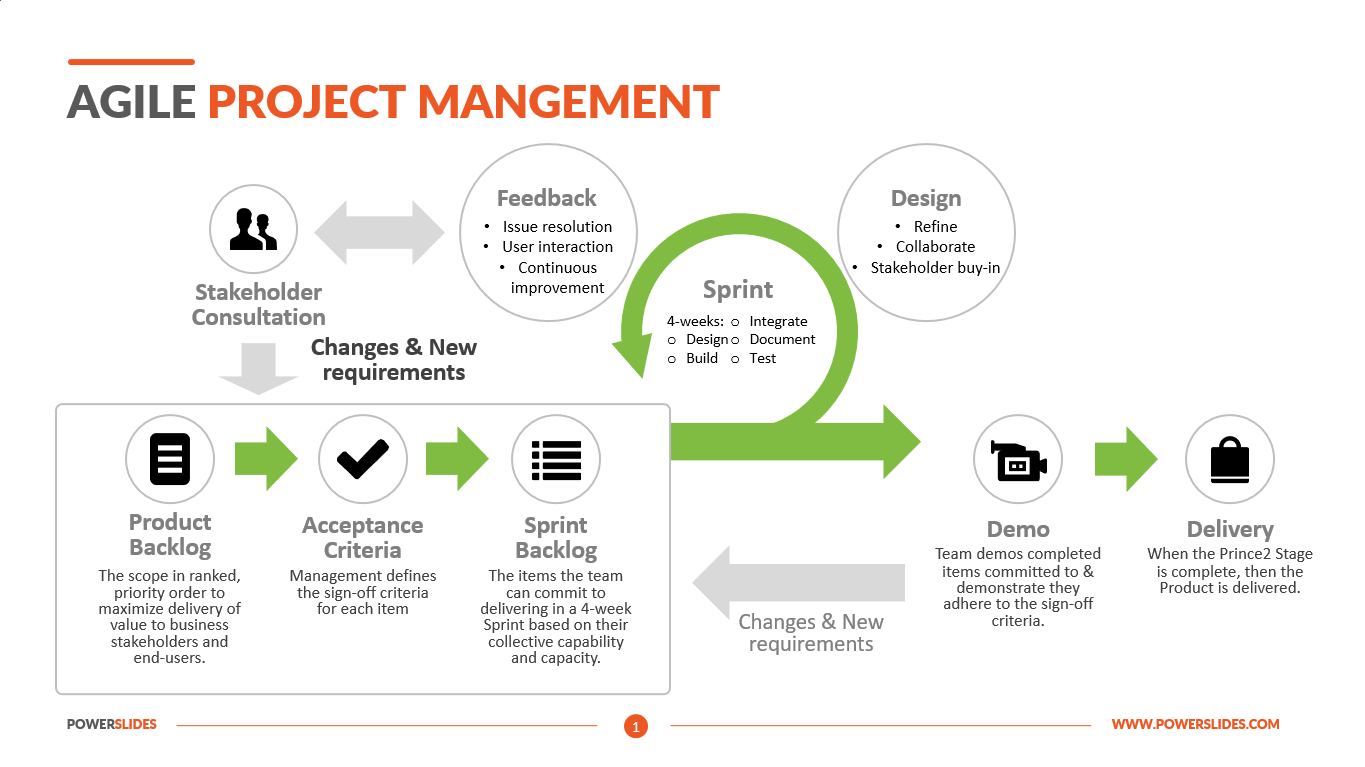Agile project management has revolutionized the way projects are executed, emphasizing adaptation and flexibility. However, the concept of schedule baseline backlog in agile projects remains a topic of interest and often sparks debates among project management professionals. Understanding whether schedule baseline backlog is used in agile projects is crucial for successful implementation and delivery.
In this comprehensive guide, we will delve into the intricacies of schedule baseline backlog in agile projects, exploring its role, significance, and impact. By shedding light on this aspect of agile project management, we aim to provide clarity and insights for project managers, team members, and stakeholders who are navigating the agile landscape.
Introduction to Agile Projects
Agile project management has gained immense popularity in recent years due to its iterative and flexible approach that allows for continuous improvement and adaptation to changes. This methodology focuses on delivering value to customers through incremental releases and collaboration within cross-functional teams.
The Agile Manifesto
The Agile Manifesto, created in 2001, lays down the foundational values and principles for agile project management. It emphasizes individuals and interactions over processes and tools, working software over comprehensive documentation, customer collaboration over contract negotiation, and responding to change over following a plan.
Key Concepts in Agile Projects
Agile projects are characterized by key concepts such as iterative development, self-organizing teams, customer involvement, and frequent feedback loops. Scrum, Kanban, and Lean are some of the popular frameworks used in agile project management.

Understanding the Schedule Baseline in Agile
In Agile project management, the Schedule Baseline plays a crucial role in determining the project’s timeline and milestones.
Importance of Schedule Baseline
Schedule baseline backlog in Agile projects is a reference point that outlines the project’s planned schedule, including start and end dates, major deliverables, and key milestones.
It serves as a benchmark against which actual progress is measured and any deviations are identified and addressed.
Creating a Schedule Baseline
To establish a schedule baseline, project teams collaborate to define the project scope, break it down into tasks, estimate the effort required for each task, and sequence them in a logical order.
The schedule baseline is typically set during the project planning phase and is approved by stakeholders before project execution begins.

Importance of Backlog in Agile Methodology
In agile methodology, the backlog plays a crucial role in ensuring project success. Backlogs are dynamic lists of tasks or requirements that need to be completed within the project, ranked in order of priority. They serve as a roadmap for the entire project, providing clarity and direction for the team.
Enhanced Visibility and Transparency
One of the key benefits of utilizing a backlog in agile projects is the enhanced visibility it provides into the project’s progress. By maintaining a prioritized list of tasks, team members, stakeholders, and managers can easily track what is being worked on and what is coming up next.
Continuous Adaptability and Flexibility
Another advantage of the backlog is its ability to adapt to changing requirements and priorities in real-time. As new information emerges or market conditions shift, the backlog can be updated accordingly, allowing the team to remain agile and responsive to evolving needs.
Using the backlog ensures that the team focuses on delivering the most valuable features first, maximizing the project’s return on investment (ROI) and customer satisfaction.
Integration of Schedule Baseline and Backlog
When discussing the integration of schedule baseline and backlog in agile projects, it is essential to understand the interplay between these two key components. The schedule baseline sets the foundation for the project timeline, outlining key milestones and deadlines. On the other hand, the backlog represents a prioritized list of features or tasks that need to be completed.
Benefits of Integrating Schedule Baseline and Backlog
By aligning the schedule baseline with the backlog, project teams can effectively prioritize tasks based on their importance and dependencies. This integration ensures that the delivery of features is in line with the project timeline, leading to improved project management and stakeholder satisfaction.
Moreover, this approach enables teams to quickly adapt to changing requirements and priorities, allowing for greater flexibility and responsiveness in agile projects.
Challenges Faced in Integration
However, integrating the schedule baseline and backlog can present challenges, especially in dynamic project environments where requirements evolve rapidly. Maintaining the balance between adhering to the baseline schedule and accommodating changes from the backlog can be a delicate balancing act.
- Resource allocation may need constant adjustment to ensure tasks are completed on time.
- Clear communication and collaboration are crucial to ensure that changes in the backlog are reflected in the schedule baseline.
- Regular monitoring and evaluation are necessary to identify potential bottlenecks and delays.
Utilizing Schedule Baseline Backlog for Project Planning
When it comes to agile projects, the schedule baseline backlog plays a crucial role in project planning and management. It serves as a foundation for setting project timelines, milestones, and deliverables.
Benefits of Schedule Baseline Backlog in Agile Projects
Having a well-defined schedule baseline backlog helps teams in prioritizing tasks, estimating project duration accurately, and tracking progress effectively. Consistent update and monitoring of the backlog ensure that the project stays on course.
Key Components of a Schedule Baseline Backlog
The schedule baseline backlog typically includes user stories, tasks, estimations, dependencies, and acceptance criteria. This breakdown helps in breaking down the project into manageable chunks.
Challenges and Solutions in Implementing Schedule Baseline Backlog
In agile projects, implementing a schedule baseline backlog can pose various challenges. One common difficulty is balancing flexibility with structure. Agile values responding to change over following a plan, but a schedule baseline backlog requires a certain level of predictability. Finding the right balance between adaptability and predictability is crucial.
Resource Allocation
One challenge is accurately estimating resource requirements for each backlog item. Limited resources can hinder the implementation of the backlog, leading to delays. Solutions include capacity planning and team collaboration to optimize resource utilization.
Changing Priorities
As project priorities shift, the schedule baseline backlog may need frequent updates. Effective communication is key to managing changing priorities and ensuring alignment within the team. Regular backlog grooming sessions can help adapt to evolving project needs.
Best Practices for Managing Schedule Baseline Backlog
In agile projects, managing schedule baseline backlog efficiently is crucial for project success. Here are some best practices to effectively handle schedule baseline backlog.
Regular Review and Prioritization
Regularly review and prioritize items in the schedule baseline backlog to ensure that the most critical tasks are addressed first. This helps in keeping the project on track and meeting deadlines.
Collaborative Team Effort
Encourage collaboration among team members when managing the schedule baseline backlog. Team feedback and input can provide valuable insights for making informed decisions on task prioritization.
Utilize Agile Tools
Implement agile tools such as digital boards and project management software to effectively manage and track the schedule baseline backlog. These tools facilitate real-time updates and visibility for all team members.
Frequently Asked Questions
- What is a Schedule Baseline Backlog in Agile projects?
- A Schedule Baseline Backlog in Agile projects is a prioritized list of work items that have been estimated and are ready to be executed within a defined time frame to achieve project milestones.
- Why is the Schedule Baseline Backlog important in Agile projects?
- The Schedule Baseline Backlog is important in Agile projects as it helps in planning, prioritizing, and tracking the project work. It provides a clear roadmap for the team to deliver value incrementally and meet project deadlines.
- How is the Schedule Baseline Backlog different from a regular backlog in Agile projects?
- While a regular backlog contains all the tasks and features to be done in the project, the Schedule Baseline Backlog is a subset of prioritized items that are committed to delivering within a specific time frame to achieve project objectives.
- How can teams effectively manage the Schedule Baseline Backlog in Agile projects?
- Teams can effectively manage the Schedule Baseline Backlog by continuously refining and prioritizing the backlog items, estimating the effort required for each task, and ensuring that the team has a clear understanding of the work to be done.
- What are the benefits of using a Schedule Baseline Backlog in Agile projects?
- Some benefits of using a Schedule Baseline Backlog in Agile projects include improved project planning, better transparency and visibility into project progress, increased team collaboration and efficiency, and the ability to adapt to changes quickly.
Final Thoughts
In conclusion, the schedule baseline backlog plays a crucial role in Agile projects, serving as a roadmap for project timelines and deliverables. By breaking down work into manageable increments and prioritizing tasks based on value and urgency, Agile teams can enhance their efficiency and adaptability. This backlog helps teams stay on track, make informed decisions, and respond to changes swiftly, ensuring project success. Embracing the schedule baseline backlog enables teams to balance flexibility with structure, promoting transparency and collaboration. It empowers teams to deliver high-quality products efficiently, meeting customer needs and maximizing business value. Remember, in Agile projects, the schedule baseline backlog is not just a tool but a key to successful project execution.
